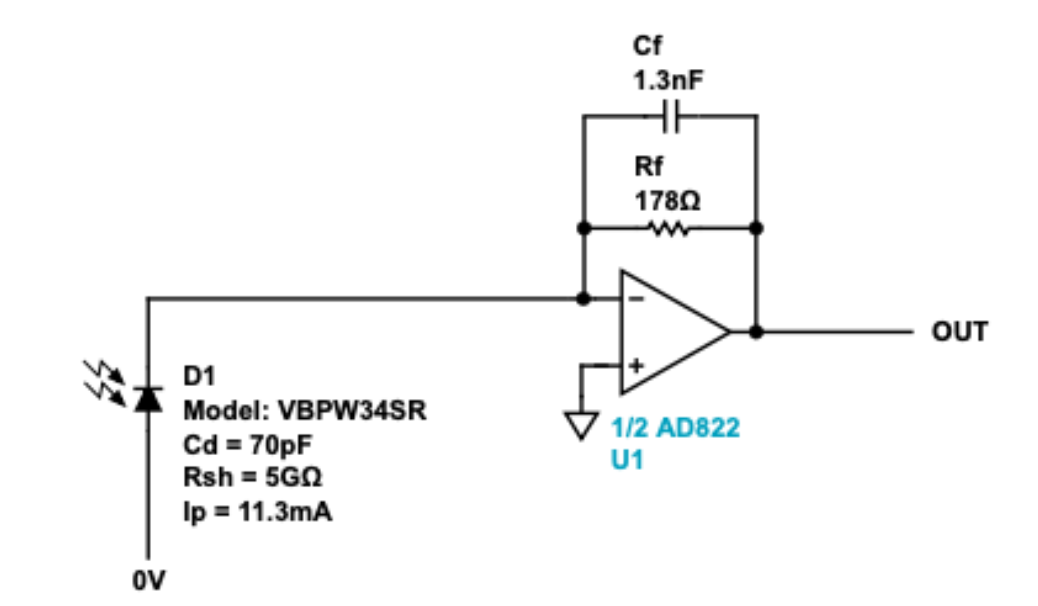I am trying to measure the voltage coming out of my op-amp after connecting it to my photodiode. As a photodiode, I am using a BPW34S from Vishay, and the op-amp is an AD822ANZ from Analog Devices. According to the Analog Devices Photodiode Circuit Wizard, the following image should be my connection:
The cathode of my photodiode is connected to the op-amp, while the anode is connected to the ground. I am using a 9 V battery to power my op-amp as a single supply. The '-IN1' is connected as shown in the above image, '+IN1' is connected to the ground, as is 'V-', and 'V+' is connected to the positive side of the 9 V battery. As a ground, I am using the negative side of the battery. I have also tried using the 5 V and GND output of a Raspberry Pi 4, but I thought that maybe I was not getting enough voltage.
I have measured the voltage between Vout and Ground of the battery with a voltmeter, but I always get 0 V as output from my op-amp, and there is no change when I put more light on my photodiode.
My photodiode works when I connect it to a resistor and measure the voltage passing through the resistor, but I need it to work with an op-amp as I want to connect it to an ADC afterwards.
Am I doing something wrong with the wiring, or is there a problem with my op-amp?

